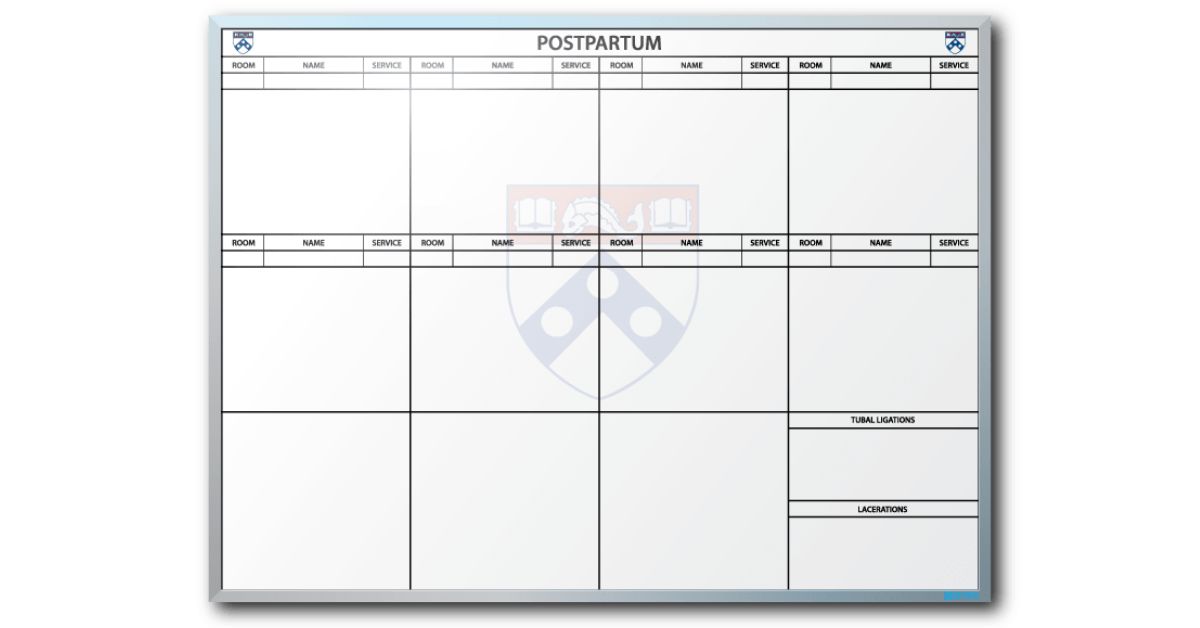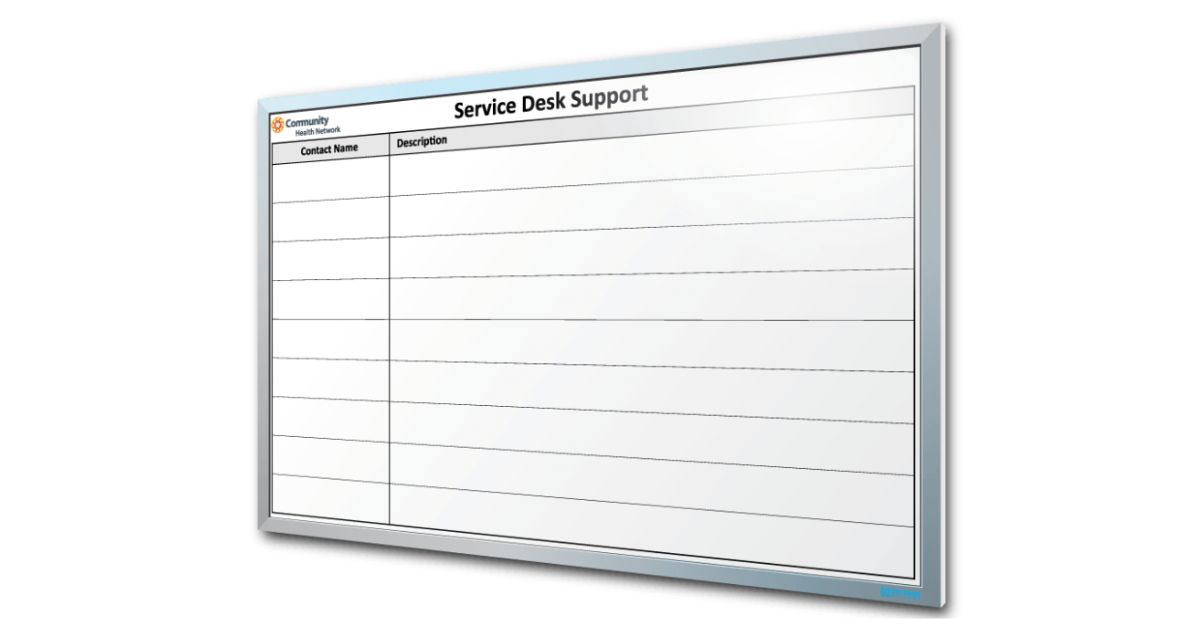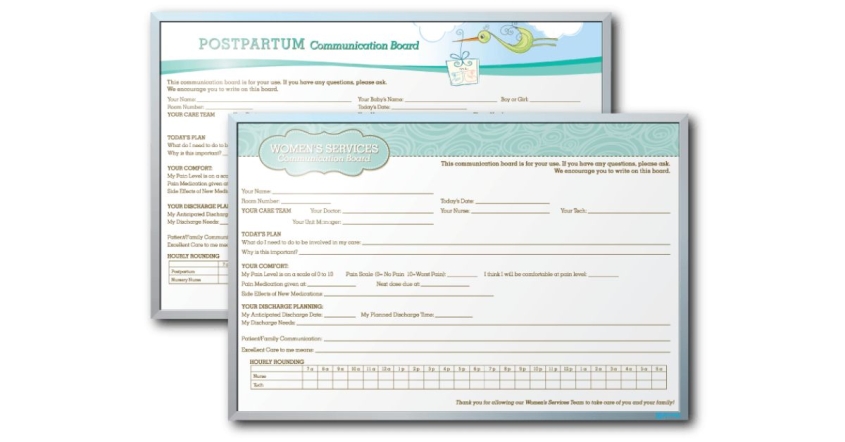The Importance of Whiteboards in Hospital Settings
Hospitals are dynamic places where communication must be clear, fast, and efficient. Among the numerous tools health professionals rely on, whiteboards are some of the most valuable for fostering order, clarity, and collaboration. Whether used in patient rooms, nurse stations, or administrative offices, whiteboards can be indispensable. This blog explores the importance of whiteboards in hospital settings and how they contribute to patient outcomes, team coordination, and operational efficiency.
Enhancing Patient Communication With Whiteboards
Clear communication is paramount in hospital environments. Patients and their families often encounter unfamiliar medical terms and procedures. Whiteboards in patient rooms offer an effective solution to bridge this gap.
When used effectively, whiteboards give patients a sense of control and understanding. They reduce uncertainty by offering a quick reference for a patient’s care plan. Doctors and nurses also use whiteboards to write notes or reminders for patients, creating a direct and transparent line of communication. This helps patients feel informed and valued, positively impacting their satisfaction with and trust in their care.
Boosting Team Collaboration Among Medical Professionals
A hospital is only as effective as the teamwork within it, and whiteboards significantly improve collaboration among medical teams. Communication between doctors, nurses, and administrative staff is central to ensuring smooth operations, particularly when time is limited.
Health professionals often utilize whiteboards in nurse stations to provide real-time updates. These boards might include unique patient care needs, emergency alerts, or procedural notes. Whiteboards provide immediate visibility and accessibility, which is crucial for decisions affecting patient welfare. Unlike digital systems that require logins, whiteboards allow anyone to view important updates or contribute their input quickly.
Collaborative planning is another essential use of whiteboards. During team huddles or meetings, they become focal points to map out strategies, assign duties, and document progress. With all eyes on the whiteboard, the involved healthcare workers can actively contribute to problem-solving and planning sessions. Overall, the incorporation of whiteboards amplifies teamwork, builds trust, and enhances accountability.
Enhancing Patient Safety With Transparent Information
Patient safety is a top priority in any hospital, and nursing whiteboards play an invaluable role by reducing medical errors. By prominently displaying patient data, whiteboards act as easy-to-update reference points for healthcare workers. This reduces the likelihood of miscommunication regarding administering medications, scheduling surgeries, and transferring patients between departments.
For instance, whiteboards simplify critical communications in emergencies by presenting concise overviews of patients’ statuses. The ability to quickly jot down notes, allergies, and special instructions on a whiteboard saves time and ensures accuracy. Having visual cues consistently available on whiteboards also helps avoid redundant documentation errors.
Additionally, hospitals can empower family members to double-check information by placing whiteboards in patient rooms and clinical wards. When informed and engaged, families can act as advocates for patient safety, providing another layer of oversight. Whiteboards improve transparency and foster a culture of involving patients and loved ones directly in the care process.

Driving Operational Efficiency Across Departments
Hospitals are juggling multiple patients, departments, and resources at any moment. Managing this complexity requires centralized tools to track and display information in a visual and easily digestible format.
Departments like radiology, surgery, and housekeeping rely on whiteboards as operational dashboards. For example, prerequisites for surgical procedures, availability of diagnostic test results, and room cleaning schedules can all be communicated visually on whiteboards. This ensures tasks move smoothly from start to finish without unnecessary delays or confusion.
Administrative offices also gain significant benefits from whiteboards. Planners listing daily schedules or to-do lists rely on these tools to track and complete all tasks punctually. Employee shifts, lunch breaks, and training sessions are better organized and quick to reference when displayed on whiteboards, freeing up valuable time for hospital employees to focus on patient care.
Hospitals using whiteboards as part of their administrative workflow often report improved staff productivity and efficiency. By reducing dependence on endless emails or outdated communication systems, whiteboards save time and help everyone synchronize their efforts.
Supporting Training and Continuous Education
Medical professionals need to remain at the top of their game throughout their careers by attending trainings and learning new skills. Whiteboards play an integral role in creating an enriching educational environment.
During training sessions, instructors use whiteboards to illustrate concepts, simulate patient cases, and brainstorm clinical approaches. The tactile experience of writing out scenarios encourages interaction and ensures students retain each lesson’s information better than they would by passively viewing slides. Essentially, the whiteboard is an irreplaceable tool in staff development.
Educational benefits are not limited to medical staff. Usually, family members supporting a loved one receive instructions on post-hospital care, dietary restrictions, or medication schedules. Whiteboards clarify these instructions, ensuring caregivers leave the hospital equipped and confident.

Promoting a Sense of Community and Engagement
Lastly, whiteboards have a unique ability to promote community and connection within hospitals. These simple tools often serve as centralized platforms for sharing uplifting messages, motivational quotes, or even success stories from patients who’ve overcome life-altering conditions, fostering hope and resilience. Many hospitals creatively use whiteboards to highlight accomplishments within specific departments, celebrate milestones, or recognize outstanding staff members, which helps boost morale and cultivate a positive work environment. Prominently placed whiteboards can also feature personalized messages tailored to staff or patients, spreading cheer, fostering a sense of belonging, and reminding everyone of their shared purpose in providing care and support.
Conclusion
Whiteboards have proven their value across all aspects of healthcare, from improving communication to enhancing education and boosting collaboration. Their simplicity belies their effectiveness. In fact, they can be indispensable tools in hospitals striving for excellence. By integrating whiteboards into day-to-day processes, hospitals can ensure transparency, keep everyone informed, and continuously provide better patient outcomes.
If your medical center is ready to experience the importance of whiteboards in hospital settings firsthand, contact Dry Erase Designs. We specialize in creating custom hospital whiteboards designed to improve communication, efficiency, and patient care. Unlike standard whiteboards, our nursing whiteboards feature permanent, embedded designs (such as templates for patient charts, schedules, or care instructions) directly in the board’s material. These designs won’t fade or smudge, so they remain clear and professional-looking over time, even with heavy use. Whether you need patient room boards, scheduling boards, or custom layouts tailored to your hospital’s workflow, we’ll work with you to create solutions that meet your specific needs.




